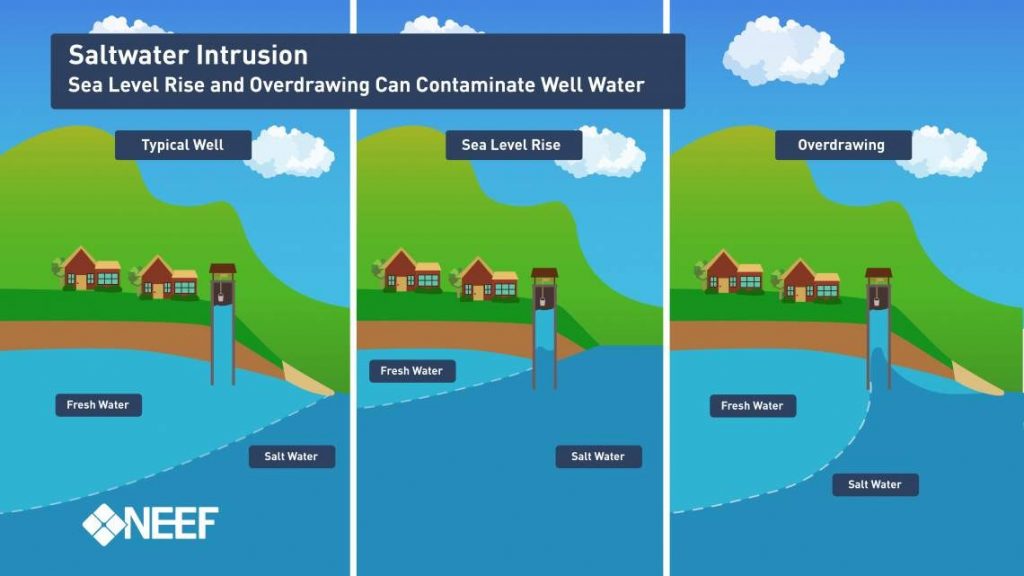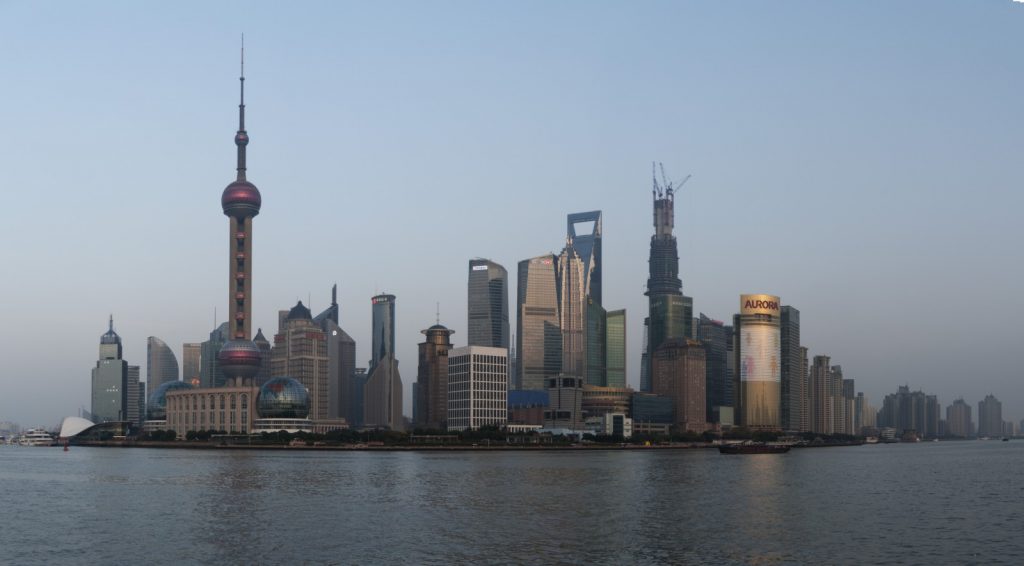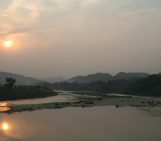 In many countries, access to clean and safe to drink water is often taken for granted: the simple act of turning a tap gives us access to a precious resource. In today’s post,Bárbara Zambelli Azevedo, discusses how over population of coastal areas and a changing climate is putting ready access to freshwater supplies under threat.
In many countries, access to clean and safe to drink water is often taken for granted: the simple act of turning a tap gives us access to a precious resource. In today’s post,Bárbara Zambelli Azevedo, discusses how over population of coastal areas and a changing climate is putting ready access to freshwater supplies under threat.
Water is always moving downwards, finding its way until it gets to the sea. The same happens with groundwater. In coastal areas, where fresh groundwater from inland meets saline groundwater an interesting dynamic occurs. As salt water is slightly denser than freshwater, it intrudes into aquifers, forming a saline wedge below the freshwater. This boundary is not fixed, it shows seasonal variations and daily tidal fluctuations. It means that this interface of mixed salinity can shift inland during dry periods, when the freshwater supply decreases, or seaward during wetter months, when the contrary happens.

Freshwater and saltwater interaction. Credit: The National Environmental Education and Training Foundation (NEEF).
Once saline groundwater is found where fresh groundwater was previously, a process known as saltwater intrusion or saline intrusion happens. Even though it is a natural process, it can be influenced by human activities. Moreover, it can become an issue if saltwater gets far enough inland that it reaches freshwater resources, such as wells.
According to the UN report, about 40% of world’s population live within 100km from the coastline or in deltaic areas. A common source of drinking water for those coastal communities is pumped groundwater. If the demand for water is higher than its supply, as can often occur in densely populated coastal areas, the water pumped will have an increased salt content. As a result of overpumping, the groundwater source gets contaminated with too much saltwater, being improper for human consumption.
With climate change, according to the IPCC Assesment Reports, we can expect sea-level to rise, more frequent extreme weather events, coastal erosion, changing precipitation patterns and warmer temperatures. All of these factors combined with the a increased demand for freshwater, as a result of global population growth, could boost the risk of saltwater intrusion.

Shanghai – an example of densely-populated coastal city. By Urashimataro (Own work) [CC BY-SA 3.0 ],via Wikimedia Commons.
With the aim of preserving fresh groundwater resources for coastal communities at present and in the future, dealing with the threat of saline intrusion is becoming more and more important.
Therefore, to be able to mitigate the problem, first of all, it needs to be better understood. This can be done by characterising, modelling and monitoring aquifers, assessing the impact and then drawing solutions. Currently there are many mitigation strategies being designed worldwide. In Canada, for example, the adaptation options rely on monitoring and assessment, regulation and engineering. In the UK, on the other hand, the simpler solution adopted is reducing or rearranging the patterns of groundwater abstraction according to the season. In Lebanon, a fresh-keeper well was developed as an efficient, feasible, profitable and economically attractive way to provide localised solution for salination.
Every case should be analysed according to its own characteristics and key management strategies adopted to ensure that everyone has access to clean and safe water until 2030 – SDG6.


